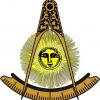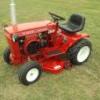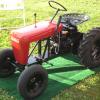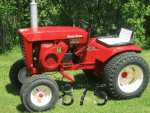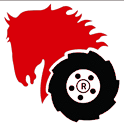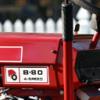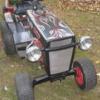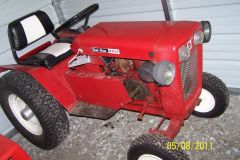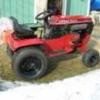Leaderboard
-
in all areas
- All areas
- Markers
- Marker Comments
- Marker Reviews
- Articles
- Article Comments
- Article Reviews
- Classfieds
- Classified Comments
- Classified Reviews
- Wiki's
- Wiki Comments
- Wiki Reviews
- Blog Entries
- Blog Comments
- Images
- Image Comments
- Image Reviews
- Albums
- Album Comments
- Album Reviews
- Files
- File Comments
- File Reviews
- Posts
-
Custom Date
-
All time
November 28 2011 - February 28 2025
-
Year
February 27 2024 - February 28 2025
-
Month
January 27 2025 - February 28 2025
-
Week
February 20 2025 - February 28 2025
-
Today
February 27 2025 - February 28 2025
-
Custom Date
03/30/2012 - 03/30/2012
-
All time
Popular Content
Showing content with the highest reputation on 03/30/2012 in all areas
-
1 pointHeres the process of tearing down a hydro pump from a D. I will do my best to describe everything in detail so that anyone can handle it. I must say with Paul Frederis help we tore it down, cleaned and rebuilt it in 4 hours including tearing it down a second time because of MAJOR rust issues causing binding of the pistons. I will do this in chronological order as best as I can Step #1 Here is the pump before tear down. You need to remove the four 12 point bolts using a 3/8 12 point socket wrench in order to seperate the aluminum housing from the cast steel valve body STEP # 2 shows the bolts out and the pump housings seperated. Be ready to struggle slightly if your pump was never opened. It was necessary for us to put the aluminum part in a vice and hit the steel end with a dead blow hammer and brass punch to get it to sperate from the gasket/adhesive. You must rest the pump on its side or you will lose slippers and other items if you do it in the upright position. Upon opening it a large quantity of rust was found inside formed on the steel end suggesting water infiltration. Step #3 In this photo you can see the rusty liquid on the slippers and the general shape of them. They were scratched but the corners were square and not rounded over, which is very important Step #4In this pic Paul is trying to clean the rust off of the oil pump housing. As you can tell it was pretty rough. The 4 bolts here are 12 point also, you need to use a 5/16 12 point socket socket to remove these. this is another pic of the pump housing and the rust and bolts. Also pay attention to the orientation of the small pin location on the oil pump housing. Its on the botton of the pic and must be that way for reassembly. It is very important for reassembly that this faces the same way. Step #5 Here is the oil pump gear in the housing. You must mark this on the housing and impeller before you take it apart. Every lobe only fits its mating surface 1 way. If you screw it up the pump will bind and not pump oil to feed the cylinder, slippers and swash plate. The o-rings are the same set up as the manifold with a square backer ring and a regular o-ring on top to seal. Step #6 In this step you need to remove the charge valves. They are 5/8 standard socket. It is an O.R.B.( O Ring Boss). These were pretty tight but did come loose. Here are some close ups of the charge valve. We made a legal notebook map so we could be sure it all went back together well. one side has a spring and a ball, the other side has a small tapered shaft and spring. Later models of this pump had balls and springs in both sides. One thing to note is that occasionally you will find shims between the spring and ORB fitting. These were installed when the pumps didnt make enough pressure during testing. The shim increased tension on the spring and therefore raises the oil pressure just like it would in an oil pump for an engine. Step #7Next pics are a close up of the housing showing the accelerator valve removed. There are 2 of these. 1 on each side. They are the large straight head screwdriver tip recessed into the block. They are ORB also but damn were they tight. We needed to use an impact driver to break them loose. All thats inside is a ball and spring. Step #7Next pic is of the push valve. Remove it and check to be sure there are no gouges in the tapered area. If there are, oil will leak by and cause speed to slow and pump to overheat eventually during use. Step #8This is the inside of the aluminum housing. It shows the direction control where the swash plate sits. The can be removed if needed by removing the spring clip on the shaft where it comes through the outside of the housing on the flush side, not the long side that the direction linkage attaches. You then pull the shaft out and the swash plate resting surface will clunk into the bottom of the housing for you to pull out. The only reason to do this would be to replace a bad bearing. Step #9 Here is a close up of the swash plate during polishing. I started with 800 grit, moved to 1200 and then to the crocus cloth as the final step. DO NOT use water to lubricate the crocus cloth. it causes the adhesive to melt and the cloth to become junk. Use oil only for lube. This is a before of the swash plate showing severe rusting from the water that was inside this pump. this is after the three step polishing sequence. As you can see its a mirror now Step #10Here is the brass direction control valve plate showing scratches and oxidation. This also goes throught the 3 step process of polishing. This is the same peice after polishing Step #11 is the polishing of the slippers themselves. We made a diagram so that we could install them back in the bores they came from. After all that work we ended up with my original cylinder too rusty to be used. The slippers bound up and we had to take the pump all apart again and use a different cylinder after we got it all back together and it wouldnt budge. Step #12 is the installation of the slippers back into the cylinder. Be sure to install the slipper retainer BEFORE you install the slippers. They wont fit if you dont. Step #13 is the installation of the swash plate back into the direction control section. This pic shows it cleaned This pic is right before installation of the cylinder and slippers. Use lots of oil on both sides of the swash plate so theres no galling on start up. It will suck to do all this work and wipe it out with a dry start. Step #13 Assemble with the unit on its side. If you dont, you will lose slippers from the cylinder bore as you slide it down over the shaft and then have to start over. Once the cylinder is installed on the shaft, then flip the housing to the vertical position. Step #14 is to reinstall the charge valves, accelerator valves, springs and shims where they came from. A little grease on the springs wont hurt. It will stop them from moving and going caddywhompus when you install them in the bore above the ball at the bottom Step #15 Shows the proper orientation of the oil pump impeller in the housing. Take notice to our marks to be sure we had it right. You then reinstall the pump assembly onto the housing using the four 5/16 12 point cap screws you removed at disassembly. Again be sure the pin is at the bottom when assembling. Step #16 shows the new gasket prior to assembling both halves . I made this one the same way as the motor housing in my original resto post. Using a hammer to cut the material. Step #17 its all back together and ready to go back in my 18 Auto.
-
1 pointI had a new shed built last fall but also lost my area under the deck and the Temp garage tent thing has to go. I needed to find a space for the tractors and didn't really want to use the large amount of floor space in the shed so I came up with a plan. Put them up in the shed's loft. I bought a 110v winch, built a simple trolly and mounted up a 3" x 3" x 10 ft sq tube. They're High and Dry now!
-
1 pointHere is the exhaust on my D160, I bought it with a two into one exhaust set up and wanted actual duals. My 18 auto is beeing redone so I robbed the mufflers off of it. What do you guys use to paint the exhaust? Here is another shot of the exhaust
-
1 pointOK, I've given into peer presure. Attached is pic of my all original 1944 Remington Rand 1911. This is a legit WWII pistol. And to think I carried this as my personal defense pistol for a couple of years. :snooty:
-
1 pointI believe that its just a hole in the block for the engine to vent from. What have you used to clean out the hole? Just air, or a pick tool?
-
1 pointActually Craig we home school all four of our kids anyway, so it's easier for me to get away with things like this. Matt :flags-texas:
-
1 pointOnan takes a lot of crap on this site.What is there several thousand members on here? Onan sold millions of engines,so all the bad mouthing is in fact a very small percent of the engines out there.I have seen Onan engines with 3000 hours on them and never so much as had the heads removed in that time. At one time Toro,John Deere,Ingersoll,Cub Cadet,Sears all used them,not to mention Onan Generators was top seller for many years,would still be if the EPA didn't force them out of the US. I have seen many 520's with over 1500 hours on them.Have a JD right now with 1800 on it,and I mow 3 acres every week with it. Just my rant for the day!!!
-
1 pointAwesome Matt...that means you were home schooling him today? Tee-ractor training sir...hooah! :text-bravo:
-
1 pointYeah Craig, I'm kind of the obsessive/compulsive type, but my youngest son who I am biulding this for is worse than I am. I brought him to the shop with me today, and I spent more time answering his questions about the tractor than actually working on the tractor. Then when it came time to go home, he didn't want to go. That's my boy!! Matt :flags-texas:
-
1 pointAs a young boy I shot every weekend at my grandparents farm. Started young with a bb gun then to the pellet riffle eventually leading me to a few different .22 caliber rifles. I still have my old 10/22 that has to have several thousand rounds through it. i still get to hunt every now and then, i do own quite a few firearms. Here is a pic of my Smith and Wesson 500 for just about anything big on the planet...I plan to get the matching caliber barrel on my Thompson Pro Hunter. I have a couple different CCW pistols and my favorite of all is my HK USP40 custom. Daddy Don taught me all i know...My brother is also a Firearms Instructor with the Oklahoma City Police Department and on their pistol team.
-
1 pointWow, talk about a man on a mission, really looks great so far...keep up the amazing work Matt. :thumbs:
-
1 point1200 hours is alot for an Onan. Most blow the exhaust valve on the rear cylinder around that tiime. My 416 has an Onan with over 1700 hours on it. All original, never opened up for any reason. It hunts occasionally like youre saying. SO theres hope that it isnt all of them. Some motors snuck thru that stayed together. I would venture to guess you got some gunk in the carb from putting her away last year with 87 octane fuel in her and possibly no stabilizer. She has crud leftover from the wonderful corn juice they shove in low octane gas nowadays. There should be a fuel filter that would catch any junk from the tank before it got to the carb. I use 93 octane because its been untampered with so far in the US. Alcohol is for drinking and for racing, not for our tractors. Onans arent really bad engines, theyre thirsty compared to a Kohler, theyre WAY expensive to fix, unlike Kohler, but as long as you keep the rear cylinder clear of debris the valve seat shouldnt shoot out of it. the carbs are finicky too from what I've been told, although mine hasnt had an issue....YET.....
-
1 pointThought this was rather timely. It was a beautiful spring day today, so I pulled my two youngest sons out of school a bit early and a friend and I took them out for some "clay pigeon" shooting -- their first time. Here's me and the boys doing a "badass" pose! The full album can be viewed here: https://www.facebook...=1&l=e412defb66 (Interesting sidenote: The site blocks the word s_k_e_e_t, but not the word "badass". Interesting.)
-
1 point
-
1 pointhttp://pesn.com/2012/03/17/9602058_Howard-Johnson_Magnet-Motor_Scam_Hosted-by-Clickbank/ Read this before you spend 47$.......
-
1 pointsince i posted pics of my 1057 with a solenoid for the starter generator, ive had a few inquiries about wiring diagrams and such to do this. well my 1277 without a solenoid became a candidate today because of many wiring issues and a burnt out switch. so i thought i would post a rundown on the install. the 1277 hasnt got much love since i got it xmas time, it gets moved around and thats about it. it had a few issues with wiring when i got it, but just havent had a chance to fix them and spend some time making it safe. well yesterday i went to move it and it was putting up a fight, wouldnt turn over very fast and started smoking from behind the dash. so i got the battery disconnected and left it alone until this morning. first of all i got the old wiring and switch out of there and got a few parts together to start on this. heres a few pics of what it looked like. cut wiring, bad connections and a bad switch. i already had disconnected the switch wiring before the pics.... better switch will be used to replace the burnt smoky one...... picked up some battery lug and ring crimp terminals for the 14 ga. wiring that i was going to replace. heres the solenoid i used. regular ford unit, around $7 from the local farm and fleet... first thing is to prepare the solenoid and work out where to mount it. i chose the same spot as my 1057, in behind the lift handle on the inside of the hood stand. one of the quadrant bolts is removed and replaced with a longer bolt so the solenoid can mount to it and a nut and star washer is used to fix the solenoid.. i needed to open up one of the holes on the solenoid bracket for the bolt to pass through, one fixing seems to hold it well enough. theres no moving around once the nut is tightened..... i didnt get a pic of the solenoid mounted up on the 1277, but heres the one from the 1057. same thing just ones a little cleaner.... then i moved on to making the battery cables. the battery in this is not the original style, that was a round post. im using this smaller different L/G post style battery and so the cables will be made to suit. i made the cables long enough so i could install either a left or right + handed battery. this tractor will be used with whatever battery is spare for a while, so i wanted to be able to use both orientations. now for this we need some 6 ga. cable and some wiring lugs. i used the crimp style with crimping pliers in a vise. ive made quite a few cables this way and it seems to hold the cable nice in the lugs. i worked on the bat+ to solenoid cable first. on a length of cable i put a lug on one end for the solenoid terminal post. i used the 'top' post for the battery feed and 'bottom' for the feed to the starter. you could do it either way as the solenoid doesnt care which one has the battery voltage. then measure the length for the cable and crimp the lug for that end. then i moved on to the cable that goes from the other solenoid post to the starter terminal.. and then made the neg side from the battery to the engine ground. heres the three cables done. used heatshrink on the terminals to protect the connection from the weather. now we move onto the 14 ga. wiring for the starter signal to the solenoid. since i was replacing the wiring that was bad, i also cut wire for the regulator bat circuit and cig lighter as well. these 4 wires were rough cut to 16 inches long. so we have 2 @ 14ga. red (for starter signal from solenoid BAT cable terminal to switch BAT+, and switch START terminal to solenoid S terminal.) 1@14ga. green (for ignition BAT+ to regulator BAT+) 1@14ga. black (for power from regulator L terminal to cig lighter) pic only shows 3 wires, just imagine theres a black one as well.... now use ring crimp terminals to terminate the wiring at the solenoid. crimping wire terminals...... first remove the outer cover..... then crimp using suitable pliers, i really like this style as it curls the tabs into the wire, rather than squashing them..... then when you are done make sure to heat shrink the ends...... both the red wires run to the solenoid. one wire will have a larger ring terminal to suit the larger bat post. the other will use a terminal to suit the S terminal on the solenoid. the wire that has the smaller terminal ( for the S terminal) mark the other end of it with a sharpie so we know this is for the S terminal. fix these two wires to the solenoid. now terminate one end of the green wire and one end of the black wire and fix to the regulator.... black to the L terminal, green to the BAT+ terminal. snake all 4 wires up through the grommet in the lower part of the dash and route over towards ignition switch area... the upper wire with the ring terminal is the wire to the coil + this was already in position. if you need to make a coil wire as well make sure to add this in so all wiring can be terminated and routed together neatly. i ended up cutting this terminal off and redoing it as the length wasnt right. cut a small piece of heatshrink tubing and place over all the wiring. once you have all the wires going to the switch neat and allowed enough room for the black lighter wire shrink the tubing to keep it in place so the lengths can be determined at the switch without individual wires moving. sometimes i will use zip ties for the same purpose. identify the red wire without the sharpie mark and the green and work out the length to cut to terminate at the BAT+ terminal of the switch. i used a 12ga. terminal for these two wires and crimped them together. now terminate the red wire with the sharpie mark to the START terminal and the coil + wire to the IGN terminal. also work out the correct length for the lighter wire and terminate. all these crimp terminals get heat shrink tubing over them. now i remove the wiring and making sure not to pull at it slowly snake it out from the dash and grommet and heat shrink the wiring into groups. the red wires going to the solenoid together, the green and black going to the regulator together and finally place larger heatshrink over the wires to the switch so that the lower end of the tubing covers the ends of the first two groupings of wire. make sure to do any crimp terminals with the tubing as well. now snake it all back into position and fix it all in place at the correct terminals.... at the regulator...... black to the L terminal, green to the BAT+ terminal. at the solenoid red with the large ring to the bat terminal that also has the cable from the battery + attached. red with the small ring to the S terminal on the solenoid. red and green terminated together to the BAT terminal of the switch. red from the coil+ to the IGN terminal ( this also takes one wire from the gen warning light) red with the sharpie mark to the START terminal (this takes the other wire from the gen warning light) black to the cig lighter. finish connecting the battery cables... one from the bat + to the large solenoid bat post (same terminal as one of the red wires) one from the other large solenoid bat post to the starter terminal. one from the battery - to ground on engine and/or other suitable place. just want to mention that two different batteries were used through this process. they had different post orientations. the first one has the + closest to the belt guard, the second has the + closer to the opposite side. hope this is easy enough to understand, not a real difficult job to do, just make sure your connections are good and you pay attention to where wires are meant to go. i used the colors off a factory wiring diagram, and used red for the solenoid signal which obviously wasnt on the factory non solenoid wiring.
-
1 pointSounds like one of the passages in the carb may still have varnish in it. Also check to make sure the small hole in the bolt that holds the bowl on is clear.
-
1 point:text-welcomeconfetti: Skip150. Make a pull up a chair and ask away, for all things it has to be. :rs:
-
1 pointHeres before and after pics of the latest aquistion. I got a COMPLETE 3 point hitch for my 18 auto. It was very rough as you can see from the pics. It sat outside on JamesBe's latest aquisiton for the last 5 years. I took me 3 and a half hours driving to Jersey and back, $100 in gas in the Wrangler, 5 hours of helping James resurrect a K482 that wasnt run in 5 years and had tins so full of mouse nests and poop that it literally seized the engine fast on the same tractor. We cleaned out the tins, I kept wiggling the flywheel back and forth unitl we got it free and could be spun by the PTO pulley in front while James cleaned out the rodent Hilton out back. Added new oil to the engine and hydro and after a little priming a shot of ether and some gas it fired up and ran for about 20 seconds til we ran out of fuel. What a day it was. After that I came home and got my son for awhile, I then went down my brothers garage and blasted rust off the 3 point for the next 6 hours. I got home at 1 this morning after realizing that the lower arms were so bent it wasnt funny. We used a NOS lift arm my brother had as a template and got the blue wrench out. Heated the hell out of the arms and bent them back to original. The next problem was to get the pivot balls loose on both end of the lower arm and the ends of the top lift arm. It took awhile soaking with tranny fluid and acetone but they move grudgingly now. Today will be spent painting I guess. I think next week will begin reassembly of the tractor and refire of my K482 with pics to show progress.... 14.5 hours of work yield results I guess
-
1 pointYou don't actually cremate your mom, you dip the bolt threads in M.O.M. and assemble. The heat will do the rest..
-
1 pointCheck the countdown clock at the top of the topic. http://www.wheelhorseforum.com/forum/13-wheel-horse-collectors-club-show/
-
1 pointalright, i found a boo boo with the wiring of the gen light. first of all, i will try to explain the theory behind the light and why it does what it does. When you switch on the ignition, you get 12 volts to the gen light from one of the wires connected to the switch ign pole, and the other wire connected to the starter (generator) acts as a ground, so the bulb lights up. When you start the engine and its running, the generator gives out 12 volts and cancels out the 12 volts from the ignition switch that is lighting the bulb, so the bulb is now getting 12 volts from either side, (no ground) and goes out. if there is a situation where voltage coming back from the generator is very low or non existent, then the gen light will be lit in some capacity..... now comes the boo boo...... one side of the light is wired to the switch ign pole (ok) and the other is wired to the switch start pole (should be right), except this start pole wire is now a signal for the solenoid to jump the battery terminals and supply power to the starter. when the key is turned on we get 12 volts to the light from the ignition side and the other is grounded so the gen light is lit (good so far......) but when the engine starts and the generator is charging, theres no way for 12 volts to get back to the light from the other side as the heavy wire from the starter to the solenoid is now disconnected so the start function isnt operating. the other end of the gen light needs to connect to the solenoid battery pole that is connected to the starter. that way when the engine starts and the generator is charging (hopefully) the light is getting two sources of 12 volts and the light goes out..... as ive wired my 1057 this way as well, i have 2 tractors to get right.... these pics are a mix from the 1057 and 1277 and what i did to remedy this mistake, i wanted to edit my original post with this info but im not able to do that anymore. first pic ive disconnected the gen light wire that was connected to the start pole on the ignition switch. to this end i extended the wire by about 6 inches to make sure it will reach down to the large solenoid terminal that connects to the starter. heres a better view of the extended wire fed the wire through the dash and down to the solenoid. put the dash back together and you can see where the bulb holder for the gen light is, there is one wire going to the ignition pole of the switch and one wire is heading down towards the solenoid.. this wire heading down to the solenoid needs to be connected to the large terminal that feeds the starter.... im sorry if the original post showing the WRONG way to wire the light screwed anybody around..... im just surprised that some of you electrical guys didnt find it....... well, maybe nobody is reading this stuff anyway.... :ychain:
-
1 pointHI--I am what you would call a Junior Varsity hunter----I like to walk around and hope to bump into something bigger than the average to take as a trophy. Don't put too much effort into chasing stuff just to shoot it. I do like to shoot and recently bought one of my "bucket list" guns.... My uncle shoots competively and we are going to jointly develope less punuishing rounds for it.... I love Winchesters as much as Wheel Horses and have a real addiction to anything with a lever ---BUT--- I just HAD to buy a Winchester Model 70 in .458 Winchester Magnum,,,, I won't ever be going to Africa but with some light 45/70 type loads with 300--350 grain slugs it will show a deer whose boss. I found this baby online and as NOS... its a 2004 and was made about an hour away in New Haven CT---any Winchester I buy HAS to be made in New Haven.... yah maybe its a dumb thing but thats just the way it has to be for me. Heres a pic...... If you ever have a school Bus that needs to be put down gimme a call. This gun will take care of it!!! LOL.... I do also have the neccesary assortment of AR15's, AK47's and other military types... Tony
-
1 point
-
1 pointJesse, ! Glad to have you aboard! I don't have your answer but others will be along, I'm sure, who will. If you haven't been following us, we're not a chat room, but rather a forum. This means that it may take a bit for someone who has an answer to see your post, but with over 2,000 members you can pretty much bet someone among us will be able and more than willing to help you! I only make the distinction between the forum and chat room thing because we've had a few folks join who thought they were getting into a chat room and were disappointed when answers didn't come immediately. The breadth of knowledge around here is pretty awesome, so with patience we can get almost anything answered. Again, welcome aboard! Duff :notworthy:
-
1 point
-
1 point

